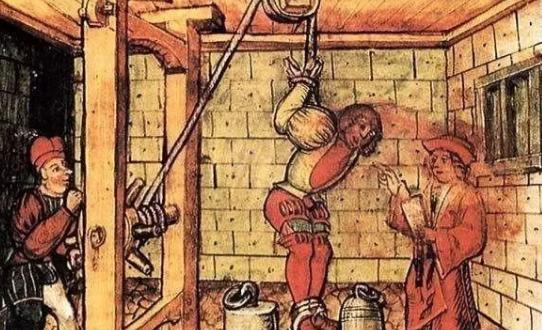The punishment of eating man by wild beasts began long before the Common Era and continued under the rule of the Christian Church until the 5th century AD.
Over the course of seven centuries, depending on the stage, such punishments of beast execution were either prevalent or relatively silent, and the methods of execution naturally evolved. Sometimes one person, sometimes a group of people executed at the same time—being tied up in the face of the attack of a beast, and later no longer tied up, but still bare-handed.

Prisoners are then given some light weapons, which can prolong the prisoner's resistance and panic. Some prisoners were able to kill even one or two beasts before they finally fell. The prolongation of the execution was initially intended only to increase the pleasure of the audience, and later such executions were thoroughly dramatized, and after careful directing, the appearance of the beast and the death of the prisoner constituted the grand finale of the whole play.
For example, the prisoner is dressed in Herachris's costume and given a mace, and in the final scene the bull is thrown into the clouds.
Historian Yubel. Monteière once wrote that usually, in plays that were actually played by actors, we would place one or two female prisoners, and at the end, according to the logic of the development of the play, they would be trampled by physically strong animals, such as bears or donkeys. If they hadn't died, they would have been hanged in secret.
No other region in the world has had as many predators as Rome. Many historians have pointed out that just by gathering together the animals used in a hunt in Rome, it would be the largest zoo in Europe. Rowland. Auge draws our attention to a few numbers. For example, in celebration of the founding of the Krishsa dynasty, nine thousand livestock brought from Africa were slaughtered in one fell swoop, and if we believe suetona, five thousand of them were killed in front of the public in one day.
The historian puts it this way: "Rome changed the animal situation on the continent, and when we think of the animals that have been exhausted in the arena for almost seven centuries, we really cannot but be stunned." ”
There are also ferocious birds, which are not ignored by those who are psychologically abnormal, because they are always looking for a unique way to execute. The civil code of the primitive Indian society of Manu once stipulated that the execution of birds was legal.
Similar situations often occur in stake and cross executions, which are used to exacerbate the suffering of prisoners, as in Yanina. As Obwaye describes in his book Everyday Life in India Before the Thirteenth Century, "the fiercest birds of prey peck at their heads and eyes, with their beaks sharp as daggers."
Indeed, prisoners, dead or alive, who are thrown into the wild, have to endure attacks by evil birds: in the East it is eagles, ducks or other birds of prey, and in Europe it is small-billed crows and large crows. Let's recall a scene where thousands of crows hovered over Montforgon, their mouths turning red with the blood of prisoners! Man has exhausted all animals to slaughter their kind. In addition to what we have listed, man has used gifts, snakes, rodents, and even insects.
There is a temple of Omun in the city of Napata in present-day Ethiopia, where the priest was given a crocodile belly on the orders of Pharaoh Elgame. Viking Ranial. Rhombro was stuffed alive into the locust bucket.
In Latin America, Central America, and some parts of Africa, one of the most terrible punishments is to place prisoners among hymenopteran insects, or ants, which often move in herds of millions. They were able to eat everything clean along the way, and it only took forty-eight hours for a horse to be eaten up, leaving only a skeleton.
Flying insects have not been forgotten. As early as 1500 BC, the Hittites would already use bees to execute bee thieves. Eighteen centuries later, in Rome, the so-called "apostates" king Jullien used the punishment again, but only instead of the wasp.
Can fish escape the imagination of these enforcers and torturers? Of course not! Fat carp and sharks, especially large eels that can reach up to two meters in length, are often used for execution. Moray eels are extremely appetizing, ferocious and tyrannical, with extremely sharp teeth across the legs, but the flesh is delicate and delicious, and the Romans specially raised them to eat their flesh. Dioclesian had many live fish cabins and often threw prisoners into them.
He was nothing more than a model of Vitius. Bolion, a Roman gourmet known for his cruelty, had punished his slaves in a similar way two centuries earlier, even if they had made only a small mistake. One day, August went to his house for dinner, and a slave broke a wine glass and threw it into a live fishing boat.